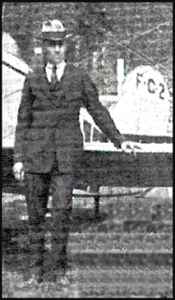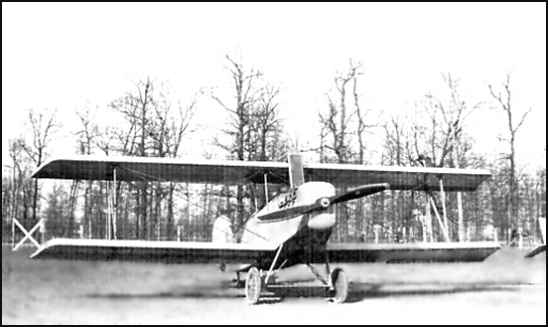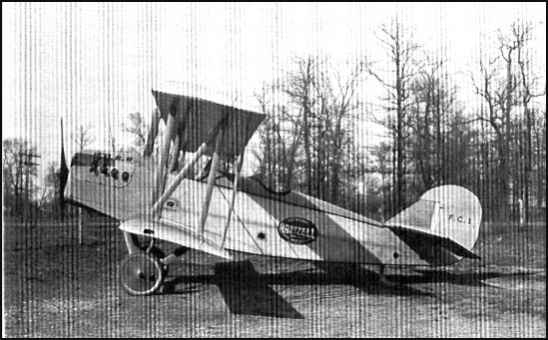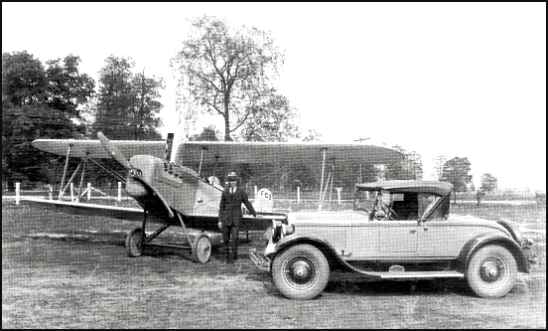
 |
Collection of Gregory S. Elam |
|
Letter from Jean Charavay, 10/31/99 Son of Frederick Charavay Collection of Gregory S. Elam Dear Greg, Kim Et Al, Helen and I were pleased with your visit. Was a pleasure to have a chance to gain more knowledge of your enviable family. I thought I should be a real boring braggart and go back to my grandparents. This would be back, to the 1850-60 era. Dad's father was from Lyon, France and he married a woman from Switzerland with a family name of Klenast.. They came to the US before 1885. He died of diabetes about the time I was born, (1917) and, just before insulin was discovered. He and a partner owned a successful silk finishing plant in Patterson, New Jersey. She lived in New Jersey with Dad's brother till his death in the 1940s. She came to Piqua and lived next door to my parents till her demise about 1950s. at age 85. As a side note, these grandparents had a retirement home on Merritt Island in Florida at the time of his death in 1917.. This is now part of Cape Canaveral. In those years, the Island was only accessible by boat, no bridges at that time! Dad had only one brother. During his life time, Maurice was a college professor before he and a partner purchased a seat on the New York Stock Exchange that they operated till his demise. About 1940, Wilma and I visited her sister in Melbourne, Florida and as a side trip, looked at the Merritt Island site. The pleasant owners at that time had sold this condemned property to the government for Cape Canaveral expansion. I saw some of the remaining china, origtinal furniture and glassware that had "C" monograms. My mother was a stenographer in New York City when she met dad. Her father was a German immigrant, Peter Jorgenson, and his wife was a lady from Finland. She died at an early age so I never had the pleasure of meeting her. I was told he was from Essen, Germany and spent some years as a sailor aboard wind jammers as a sail maker. After coming to this country, he spent his last working years in the Brooklyn Navy Yard. After retiring, he spent time equally between Germany and our country. Near the end of WW2 he died in Germany and due to conditions then, he was necessarily buried in Germany. |
 |
Collection of Gregory S. Elam |
 |
Collection of Gregory S. Elam |
|
A few more facts concerning the FC1 and FC2 planes that may be lost if I don't speak up. My dad, the 1886
version of the Charavays, went to Pratt Institute to finish his school years. He worked up and down Broadway in New York City for a few
years to gain experience. He had a pattern making shop at one time and claimed the union made it impossible due to seniority problems,
even in those days. Later, Dad was hired for design work by the Crane Simplex Auto Company. I heard him relate the fact he designed a V8 engine for Crane which was used in the Dixie II boat. That boat was raced in international Harmsworth races setting a record. At 36 M.P.H. this boat brought (or kept) the Harmsworth trophy to the New York Yacht Club. This was the last displacement boat racing as they were outclassed by hydroplanes. Entering defense work for WWI, Dad was in charge of final testing of the Liberty engines used in WWI allied planes. This, coupled with partial hearing loss, due to engine noises, created the desire to seek other employment. A friend returning from Ohio related there was a factory in Piqua, that had adequate lumber, aircraft propeller contacts, proper building facilities and, in reality, everything except engineering or production know how. His move to Ohio was shortly before I was born in late 1917. Until the war end, Liberty propellers were produced. I remember the aircraft wind generator propelllers were also production item. They were bid very reasonably and made from the off falls from the larger Liberty propellers. At the end of WWI, business was slow, unemployment was up and in general things were in a semi depression era. There were no unions in Ohio at that time, no government welfare and labor worked with management and visa versa. Civil aviation all but dried up except many small plants developing planes for civilian use. There were a lot of surplus items that government over bought such as aircraft engines, materials, etc. I remember, as a kid, seeing the men at trap shoots using surplus 12 guage ammunition that sold very cheap at government auctions. Apprently they did not learn - it took a lot of years to clean out the excess radio gear after WW2! Due to the reasonable relationship of workers and management, Hartzell agreed to have the FC1 built rather than laying off the few remaining employees. The engine was a war surplus OX5, V* engine. As I remember it had a rating of 85 horsepower at 1450 R.P.M. |
 |
|
Collection of Gregory S. Elam One year after the original FC-1, this was the first plane using the "Clark Y" wing section to actually fly. Colonel Clark, the originator of the wing section, later verified this claim. The water cooled radiator was streamlined. The Chrysler was the first production car to have Hydraulic brakes.--- |
|
Colonel Clark had just completed the wind tunnel testing of his (now famous) Clark Y wing section and
Dad obtained the details thus making FC2 the first plane to fly this important airfoil. This was confirmed years later when Dad and I met
Colonel Clark while he was working for Fairchild Aircraft company. Walter E. Lees was the pilot as long as Hartzell had the plane. It won many races including the 1923 and 1924 Nationals, etc. In fact, that plane participated in all events possible and won high marks/money in every race entered. These facts are substantiated in the aviation year books of those years. Actual speeds were near 100 M/P.H. with three people on board including the pilot. Dad never wanted to be a pilot - said he remembered the very early pilots coming into his pattern shop to buy propellers, then read several days later of their demise during tests. Hartzell's plane was licensed by the federal government for 10 years that we know of. This was a good life for a wooden plane during this rapid development era. The economy was developing slowly from 1920 through 1929 and another idea was in order to keep the factory alive. Dad pioneered the idea of using small scale propellers for fan use. Until this time, the squirrel cage blower was the only air mover available. The blowers were ideal for pressure applications and the propeller type were applied to more of less free air movement like foundries, ventilation, paint booths, etc. Dad retired two years after I left school in 1934, and until WW2 I was the design, production engineering etc. for fans as well as propellers. These grew to larger business and at the start of WW2, the fan business was moved into another factory building and divorced from the propeller company where I remained for the duration of WW2. As we prepared for WW2, Hatzell subcontracted for United Technologies (Hamilton Standard) who supplied controllable pitch propelleres for the Cessna twin engine trainer. If production of thes propellers did not keep up with plane production, my design wood propellers were spupplied by direct contract. These two items supplied all propellers for Cessna twin trainers. Other items we supplied were wood engine test clubs to engine manfacturers as well as the government. Curtiss subcontact for P40 replacement metal propellers was another large order. Seeing only a dismal future for civil aviation, I left Hartzell's employment after VJ day. During my working years, I purchased two farms with a total of 250 acres. I farmed this quite a few years. After my parents died, Fred and JoAnn left home. It seemed like too much to retire with. Wilma did not agree, so I left for our summer home in Michigan and acquired a divorce. After 12 years of being alone there, I met and married Helen Lake. On one trip to Nevada, she found her arthritis did not bother in this climate. 21 years ago we moved here and have been quite satisfied ever since. I never found out too much about Wilma's family other than her mother had two sisters in Paris, Illonois. Her Dad was a pattern maker and they had divorced before I met Wilma. Hope this was not too boring and with too many "I's" in it! Lovingly, Grandpa Jean |
PIQUA WINS FAME WITH VICTORY OF CHARAVAY'S AIRPLANE AT ST. LOUIS Ship Constructed at Hartzell Propeller Co., Here and Piloted by Walter E. Lees Captures First Place in Great Trophy Race Thursday Afternoon The winner's average times in miles per hour for the 150-kilometer course (93.21 miles) was 89.31 While it was expected that the Charavay plane, which was designed by Mr. Charavay and built entirely in Piqua, would make a good showing, the clean cut victory against a large field of picked entrants from all over the United States was a pleasant surprise to practically everyone in Piqua who awaited news of the race with intense interest. While the commercial plane was entered through the Johnson Airplane and Supply company, of Dayton, it was built at the Hartzell company plant here, many new parts and designs being credited to Mr. Charavay.While not one iota of credit must be taken from the skillfull manipulation of the "air bird" by Lees, a veteran army aviator of Dayton, the fact is Charavay and the Hartzell company should come in for the major share of the honor of the victory. Lees himself, on landing, said that credit for the feat should go to Charavay. Generally, the Charavay plane was not conceded much of a chance at St. Louis just before the race started. The only support was from the "home folks" of Dayton and Piqua. However, when the Charavay ship passed the first three planes in front of it on the first lap and when it attained the highest average speed for the first trip, the onlookers began to notice it skimming through the air in wonderful style. SEPTEMBER 27, 1923 Three Contestants Arrive in City in On-to-St. Louis Race Air Board Receives Telegrams from Other Pilots Speeding Toward Bridgeton Field from Four Corners of Continent Lawrence B. Sperry, flying a three-cylinder 60 horsepower Sperry Messenger, completed his remarkable dash from Farmingdale, New York, early yesterday morning anda the gathering dusk in the evening brought with it two other contestants, one from Okmulgee, Okl., and the other from Dayton, Ohio. The lasts two flights were made in one day. W. A. Burke took off from the local field at Okmulgee in his Laird biplane at 12:53 p. m. yesterday. He arrived at the field at 4:45 o'clock. His ship is powered by a 150 horse-power Hispano-Suisa engine. Walter E. Lees, flying a Hartzell FC-1, left Dayton, Ohio, at 11:25 a. m. yesterday, arriving in St. Louis Field at 5:45 o'clock. He made one stop in Indianopolis. ST LOUIS, THURSDAY, OCTOBER 4, 1923 Lees Wins First Race, Averages 89 Miles Hour Victor, Flying Hartzell FC1, covers 93.21 mile Course to Win Cup and $500 Offered by St. Louis Flying Club "Casey" Jones Takes Second Place---Local Aviator Finishes Fourth One Withdraws. Lees averaged 89.31 miles an hour for the 1250 kilometers (93.21 miles) three times around the course. He wins permanent possession of the trophy and $500 cash prize awarded the winner. "Casey" Jones, in a Curtiss Oriole, won second place. Jones' time was 86.77 miles an hour for the three circuits of the course. Second prize was $300. Perry Hutton, in an Laird Swallow, finished third with an average speed of 85.28 miles an hour. Hutton's prize for third place was $200. Robertson finished fourth. The trailers were Tex Lagrone and E. P. Hewitt. Lawrence B. Sperry suffered the only accident and made a forced landing between Seeberger, the location of pylon No. 3, and the finish line. He repaired his engine and took the air again, but finished last. He was in second place at the finish of the second lap. Lees is the only pilot in the race who built and designed his own plane, even to the propeller. He is one of the oldest pilots in the country. He was one of the aviators who taught Gen. Mitchell of the army air service to fly, in 1914. His machine, a Hartzell FC1, has a Curtiss OX5 engine, and was entered by the Johnson Aircraft Company. His machine has a horsepower of 98.5 

|